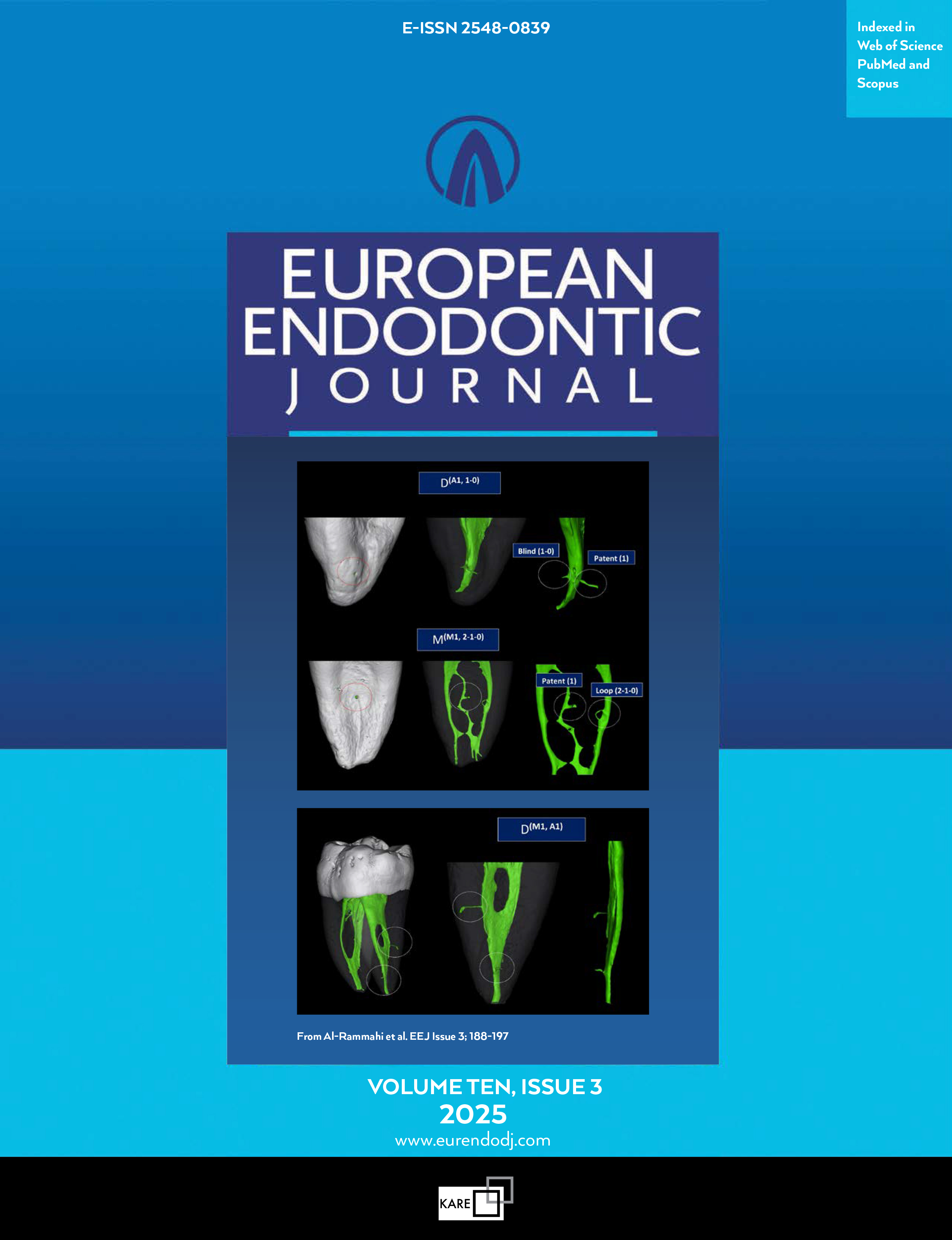Metrics
2023 IMPACT FACTOR
5 year Impact Factor
Eigenfactor
2023 CiteScore
Journal Citation Reports (Clarivate, 2024)(Dentistry, Oral Surgery & Medicine (Science))
Investigating the Effect of PIPS Technique by Using Er,Cr: YSGG Irradiation for Sealer Removal in Endodontic Retreatment
Sara Zanzal Sami, Hussein Ali JawadInstitute of Laser for Postgraduate Studies, University of Baghdad, Baghdad, IraqAim: This study aimed to evaluate the effectiveness of the Er,Cr: YSGG 2780 nm laser pulse duration during root canal retreatment using the laser-activated irrigation method (PIPS).
Methods: The study investigated the cleanliness of root canal walls in single-rooted premolars using PIPS. Teeth were initially instrumented, filled with bioceramic (BC) sealer and gutta-percha, and then retreated using nickel-titanium (NiTi) retreatment rotary files. The teeth were randomly assigned to four equal groups: control (manual irrigation), ultrasonic irrigation (UI), laser-activated irrigation with a 60 µs pulse duration, and laser-activated irrigation with a 700 µs pulse duration. Irrigation solutions consisted of 17% EDTA and 2.5% sodium hypochlorite. Statistical analysis was performed using SPSS version 21.0. Normality was checked using the KolmogorovSmirnov and ShapiroWilk tests. Group comparisons were conducted using Dunnetts t-test and the LSD test, with a significance level set at p ≤ 0.05.
Results: Statistical analysis of scanning electron microscopy (SEM) images revealed superior cleaning efficiency in both laser groups, with a significant improvement in cleanliness rates compared to the other groups. Group 4 (700 µs) achieved the highest percentage of open dentinal tubules (>75%) in the coronal and middle thirds, while Group 3 (60 µs) showed 50 75% tubule openness. Groups 1 and 2 showed significantly lower cleaning effectiveness, particularly in the apical third.
Conclusion: The pulse duration plays a crucial role in the activation of laser irrigants during root canal retreatment. The 700 µs PIPS activation resulted in better cleaning outcomes compared to the 60 µs laser activation. (EEJ-2025-02-025)
Manuscript Language: English


